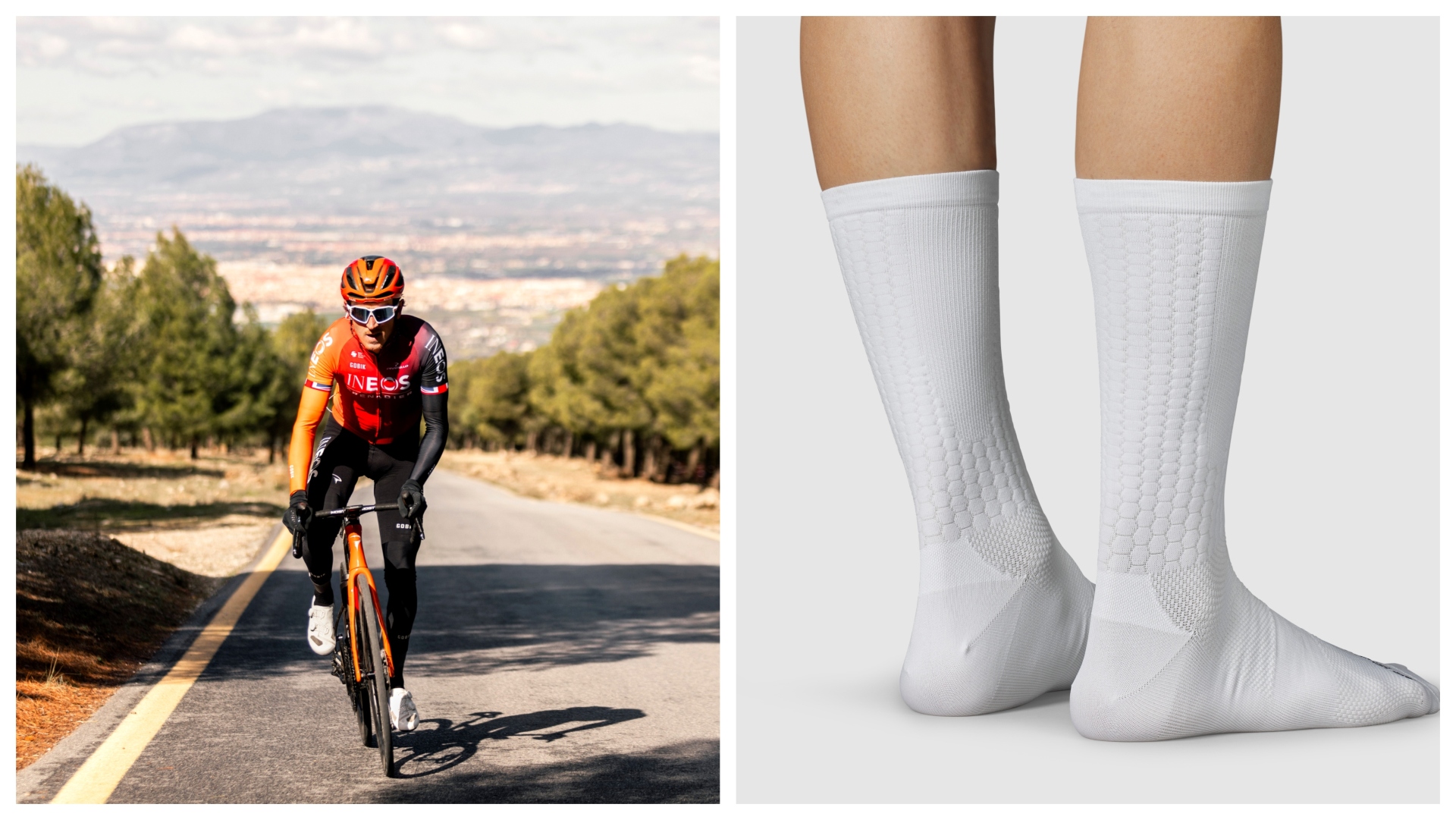
Materials and construction methods are drivers of evolution. Wood. Concrete. Plastics. Over the centuries all, and more, have played a significant role in the development of our societies and the lives we lead.
The same, of course, is true in the bike industry. Here the search for greater speed, improved comfort and enhanced functionality are routinely guided by the adoption of new materials and new methods in which to use them. Perhaps there's no better recent example than 3D printing; here we look a saddle that uses the technology to drive comfort and performance. Clothing fabrics too continue to try to align innovation with results - how about a pair of aerodynamically enhanced socks inspired by golf balls to save a few watts?
Oh, and we take a look at Geraint Thomas' new shoes and Enve's latest race tire, too
Specialized S-Works Phenom with Mirror saddle
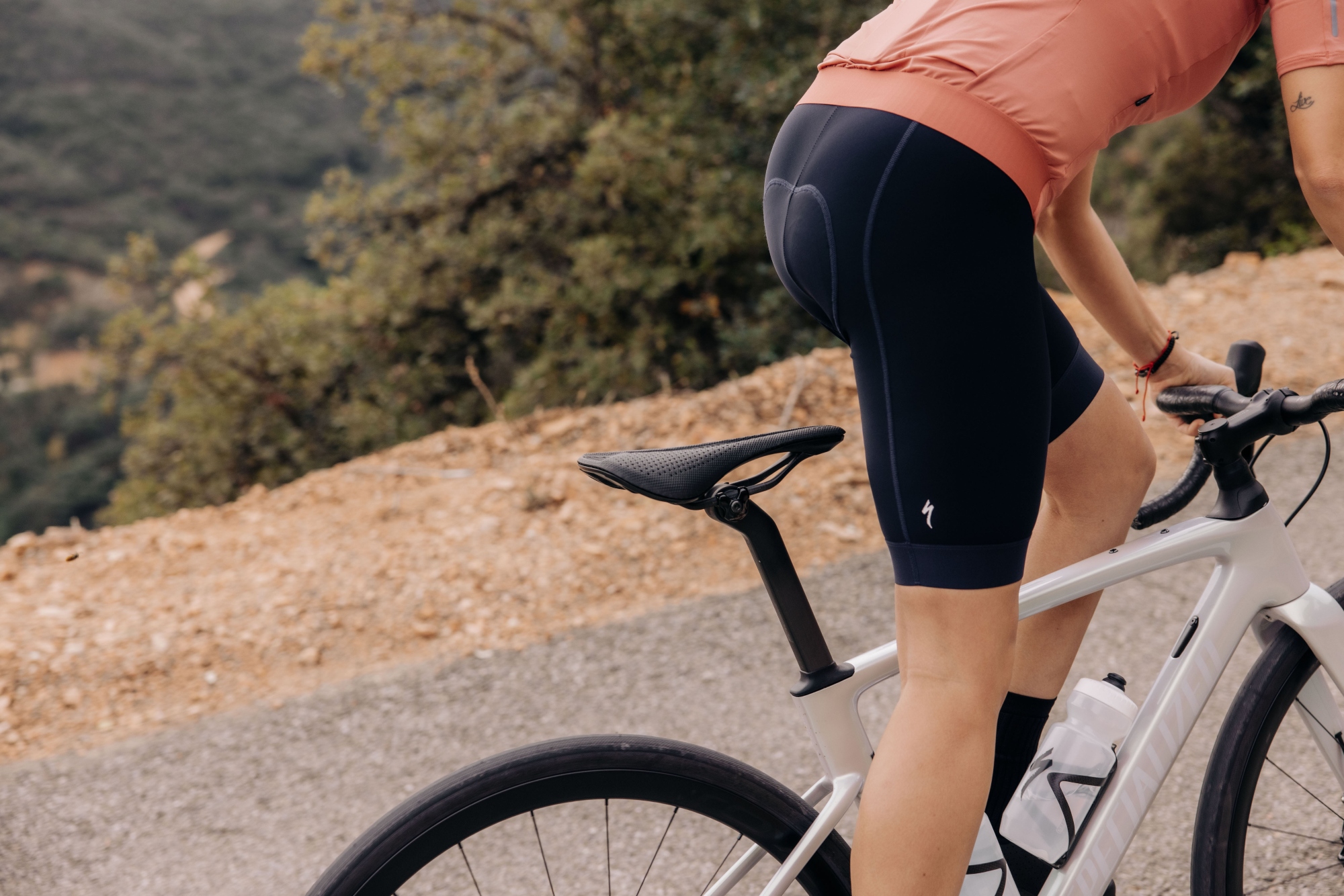
When it comes to Specialized’s Mirror technology, less is more; 28% less to be precise, according to the US brand. The number relates to the reduction in sit bone pressure felt by the rider when using the 3D printed saddle technology in the Phenom shape.
The Phenom is a long (270mm) and flat saddle, which makes it a favourite of bike racers, including Soudal-Quickstep’s Classics specialist Kasper Asgreen. Here in this S-Works guise it’s offered in two widths - 143mm and 155mm - with full carbon rails and shell. The claimed weight for the smaller width is 223g. Specialized says the Phenom sits somewhere in between its Power and Romin EVO shapes, aimed at riders who like to adjust their position as needed for “optimal power output”.
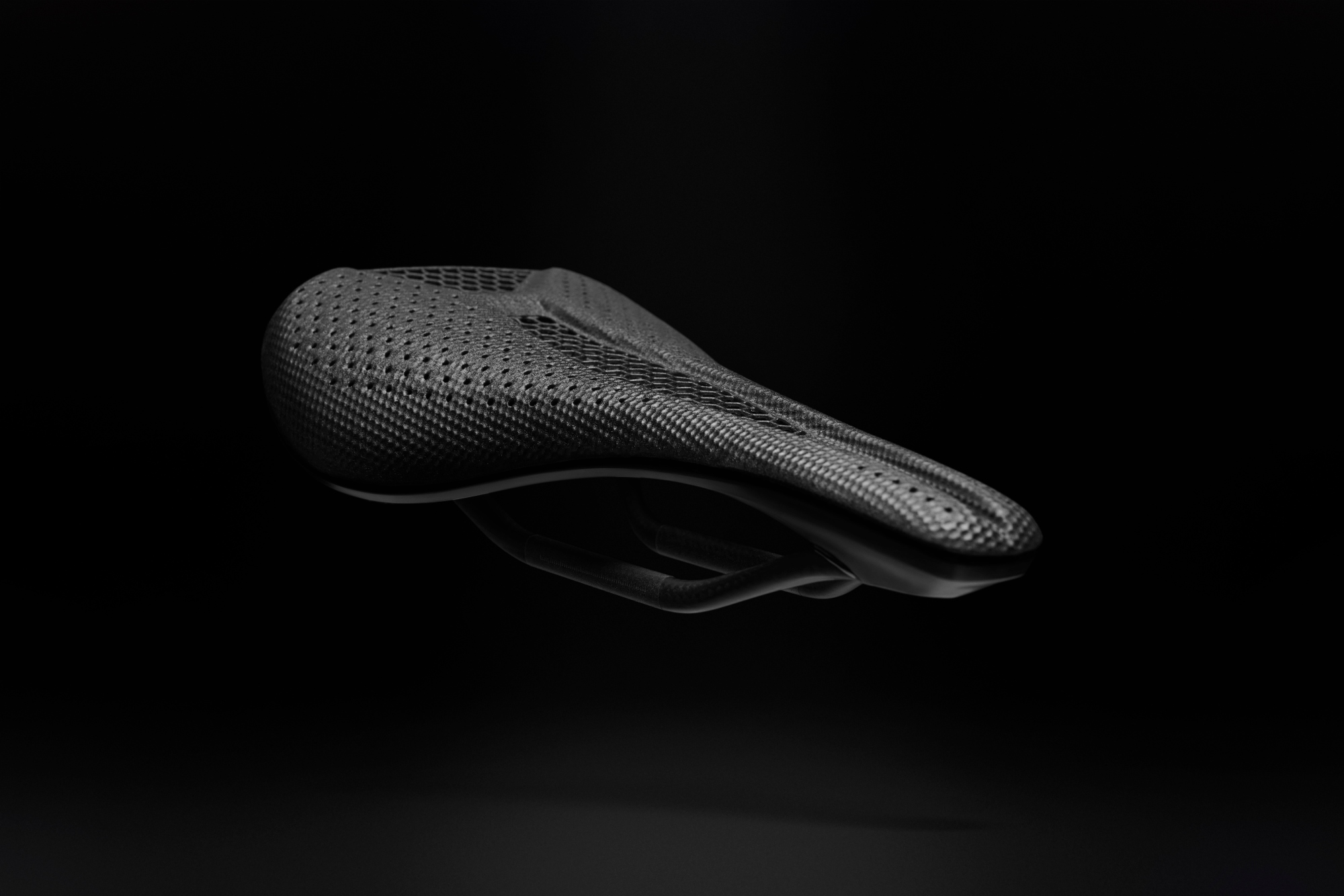
It’s a design that Specialized says allows for a thicker Mirror print, which equates to more ‘travel’ within the 3D liquid polymer padding. The result is the aforementioned 28% reduction in pressure when compared to a regular foam saddle. Specialized describes the Mirror tech as “creating a hammock effect” for the sit bones.
With the aim of improving comfort yet further, the Phenom also features an ergonomic cut-out that’s designed to better protect blood flow in soft tissue areas. And you’ll want to be sitting comfortably when you read the price of the saddle is $450 / £350.
GripGrab heads into summer
GripGrab has made its name by creating clothing and accessories that reflect both its Scandinavian roots and the region's weather. Thoughtfully designed and ready to protect riders against the cold and wet, its shoe covers and gloves have become winter staples for many cyclists. But now it’s branching out.
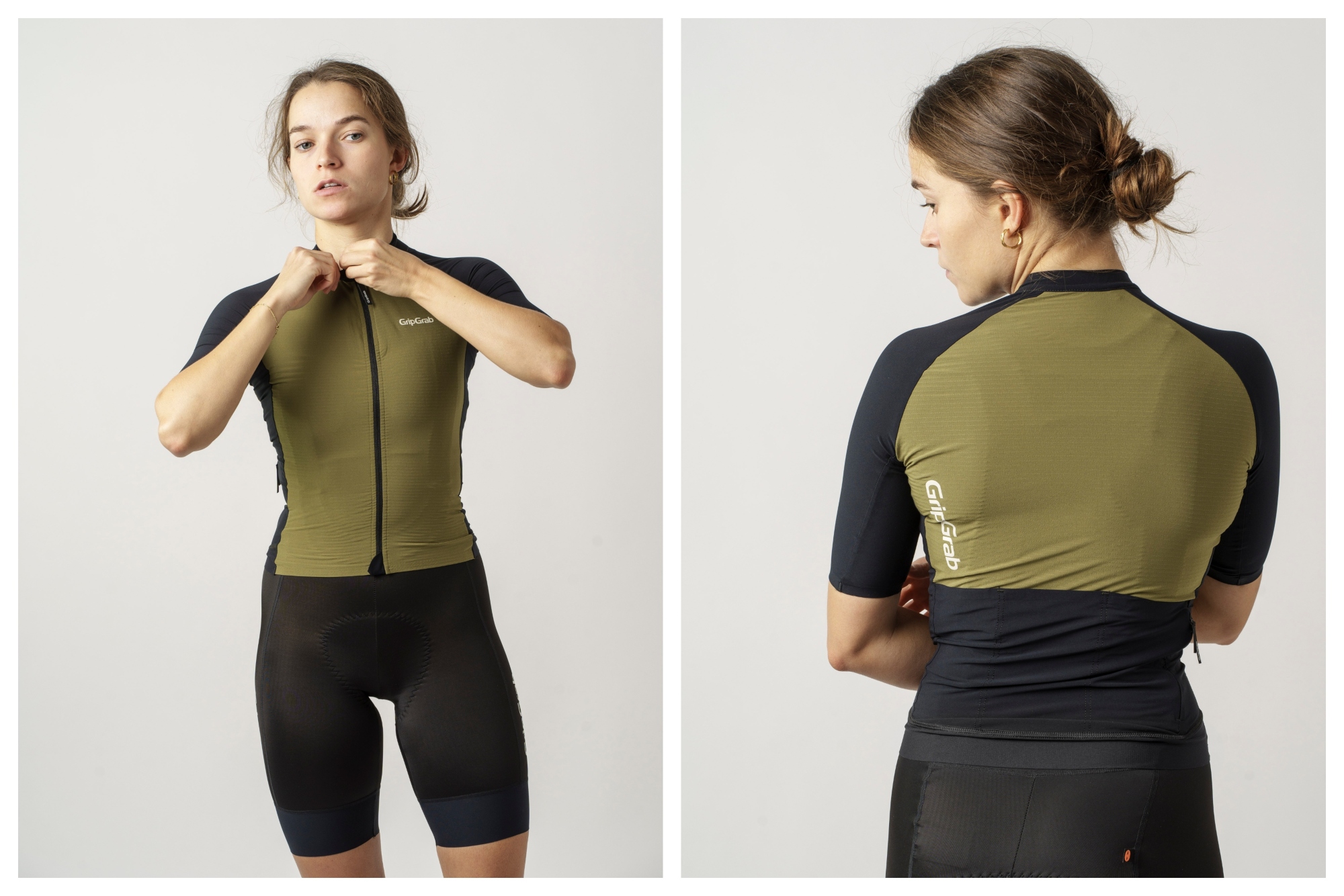
The brand has announced its first summer range, which encompasses jerseys, bib shorts and short-fingered gloves to name but a few. Like its winter kit, it’s a pretty understated affair. The focus again appears to be on blending technical fabrics with a subtle, but assured, aesthetic. There’s a gravel jersey that uses a material with ‘micro channels’ created to better regulate moisture and the rider’s body temperature; its earthy colours as low-key as the small logo on the chest and back.
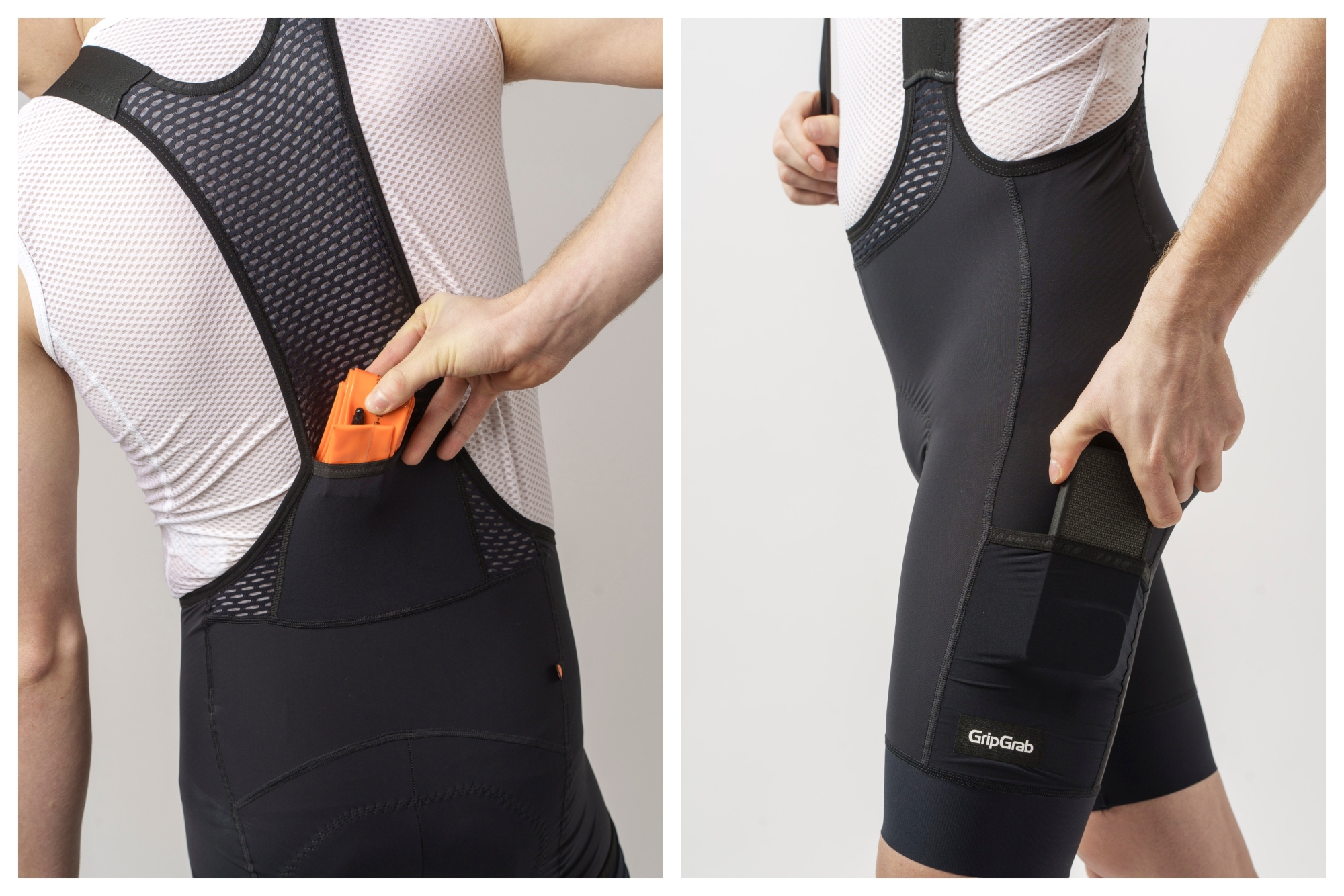
Then there’s the cargo bib shorts, now a mainstay of many bike apparel ranges. Here the aptly named Adventure bib shorts feature a pad that’s designed for long distances, material that’s said to place durability at the fore and, of course, extra storage in the shape of three pockets; two on each leg and one at the rear.
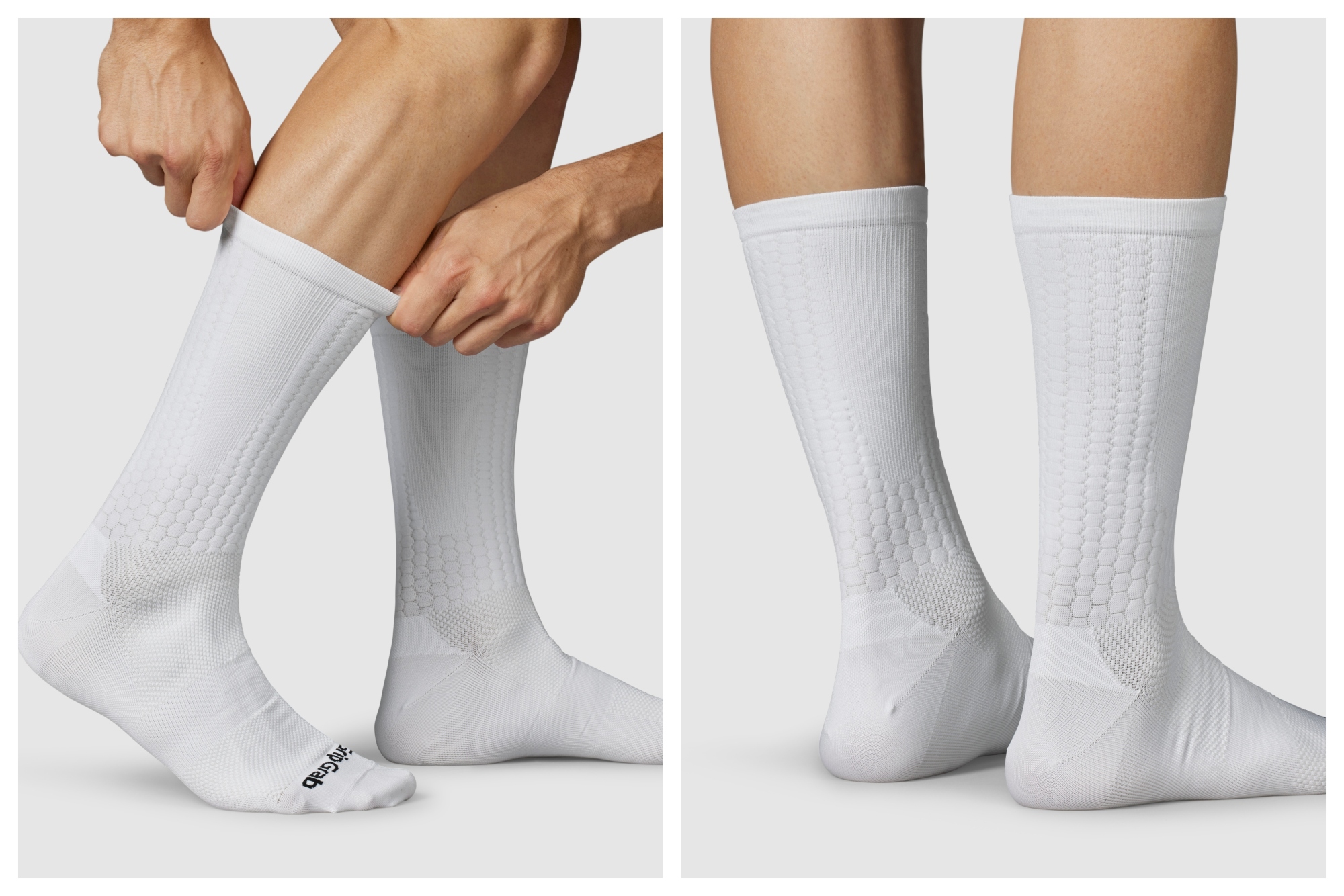
Given its reputation for making cycling gloves it’s no surprise to see a couple of pairs of mitts in the new summer line-up. But more intriguing perhaps are the FastStream aero socks, which were developed and tested in the Bike Valley wind tunnel in Belgium. The seamless socks include a knitted hexagonal pattern that’s apparently inspired by the dimples on a golf ball, which smooth out airflow as it flies through the air. Given the prodigious lengths that modern day pro golfers hit the ball, it should bode well for cyclists who don a pair of the socks on the road or track.
Geraint's new shoes?
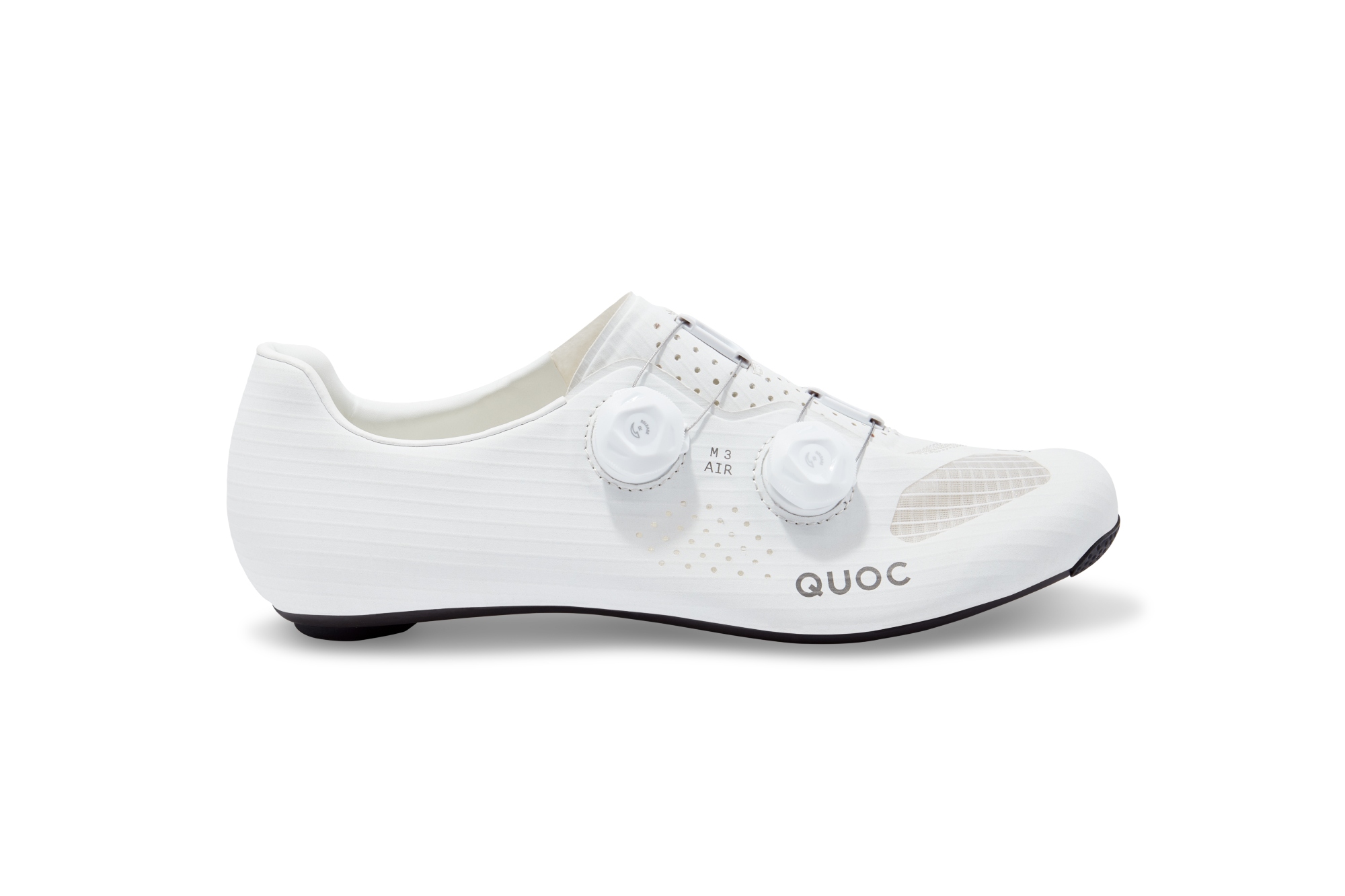
The premium road shoe category is a competitive market indeed, so it’s always interesting to see a smaller brand enter the fray. Quoc, which has built a reputation over the past few years with its off-road shoes like the Escape, does have road options in its range. But not with the £320 / $420 price tag of the new M3 Air.
Quoc says the shoes are “the product of over a decade of research and discovery in performance and innovation”. Designed with competitive cyclists in mind, they aim to match the existing Mono 2 shoes for comfort and fit, but add greater support and more space in the toe box, using a new last to achieve this. Given that the UK brand has recently announced a partnership with Geraint Thomas (and the photo below shows him training in the shoes), could we see the M2 on his feet at this year's Giro and Tour de France?
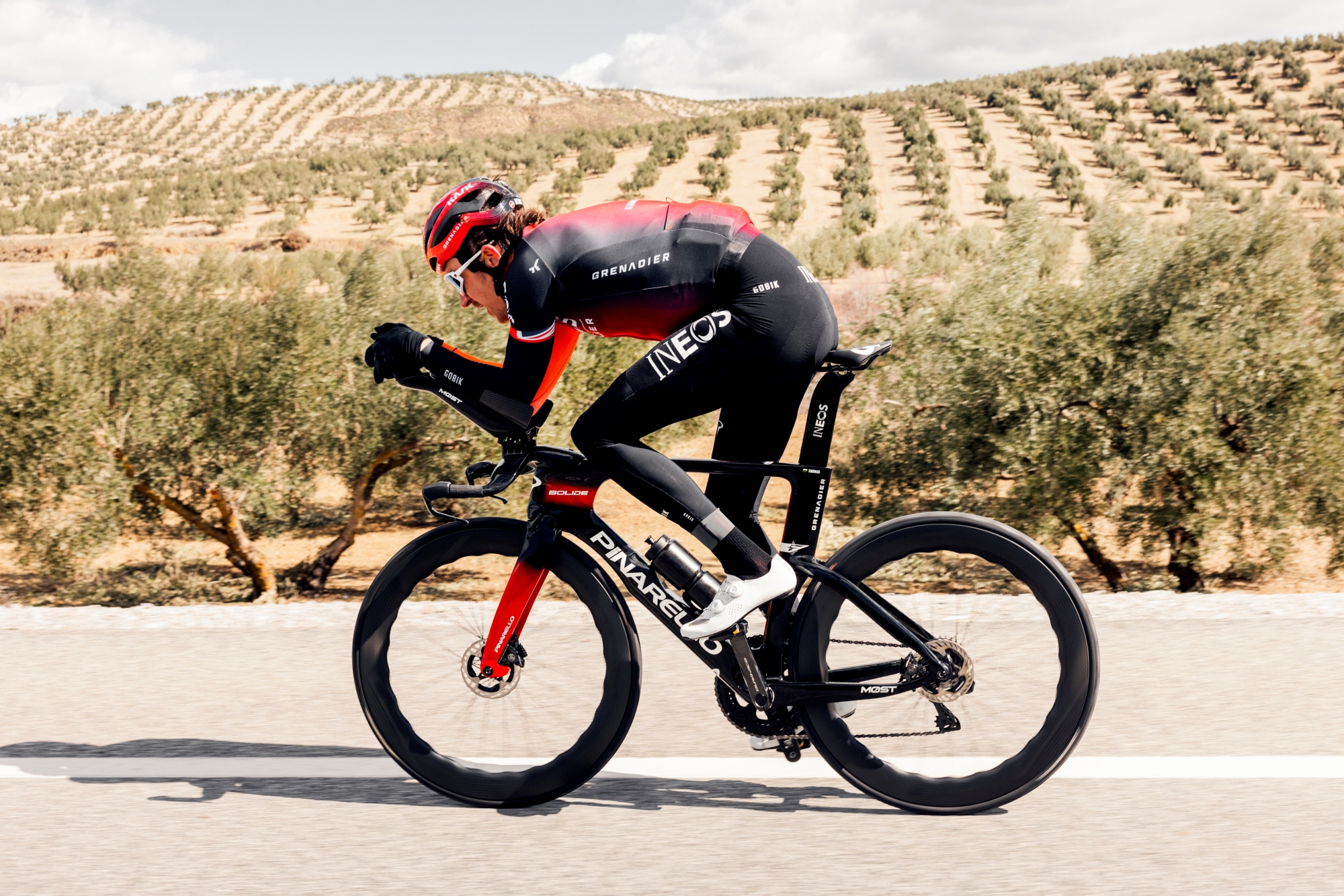
Weighing a claimed 232g per shoe (in a size EU42), the low weight is derived from an upper that blends a two-piece TPU construction with sizable mesh panels and a 100% carbon fiber sole. The upper is designed to mold to the foot while allowing it to breathe. The hand laid, unidirectional carbon sole, like most shoes with a racing bent, is stiff to maximise a rider’s power transfer. Quoc doesn’t use BOA dials; the two dials are developed in-house and use parallel lace guides alongside a ‘tongueless’ wrap design that aims to improve fit, stability and comfort.
Other details include a vibration-absorbing insole, which comes with three varying arch supports that should allow you to match it to your foot. We’re currently reviewing a pair of the M3 Airs, so it will be interesting to see how they stack up against some of the best road shoes we’ve already ridden and rated.
Enve's 'fastest tire' yet
‘Race day’, in cycling terms, is an evocative term. It suggests the clamour of fans at the roadside, the risk-reward strategy of the riders hellbent on a podium spot and technology where speed trumps all. Enve’s newest tire bears this name, alongside the claim of being “one of the outright fastest on the market”.
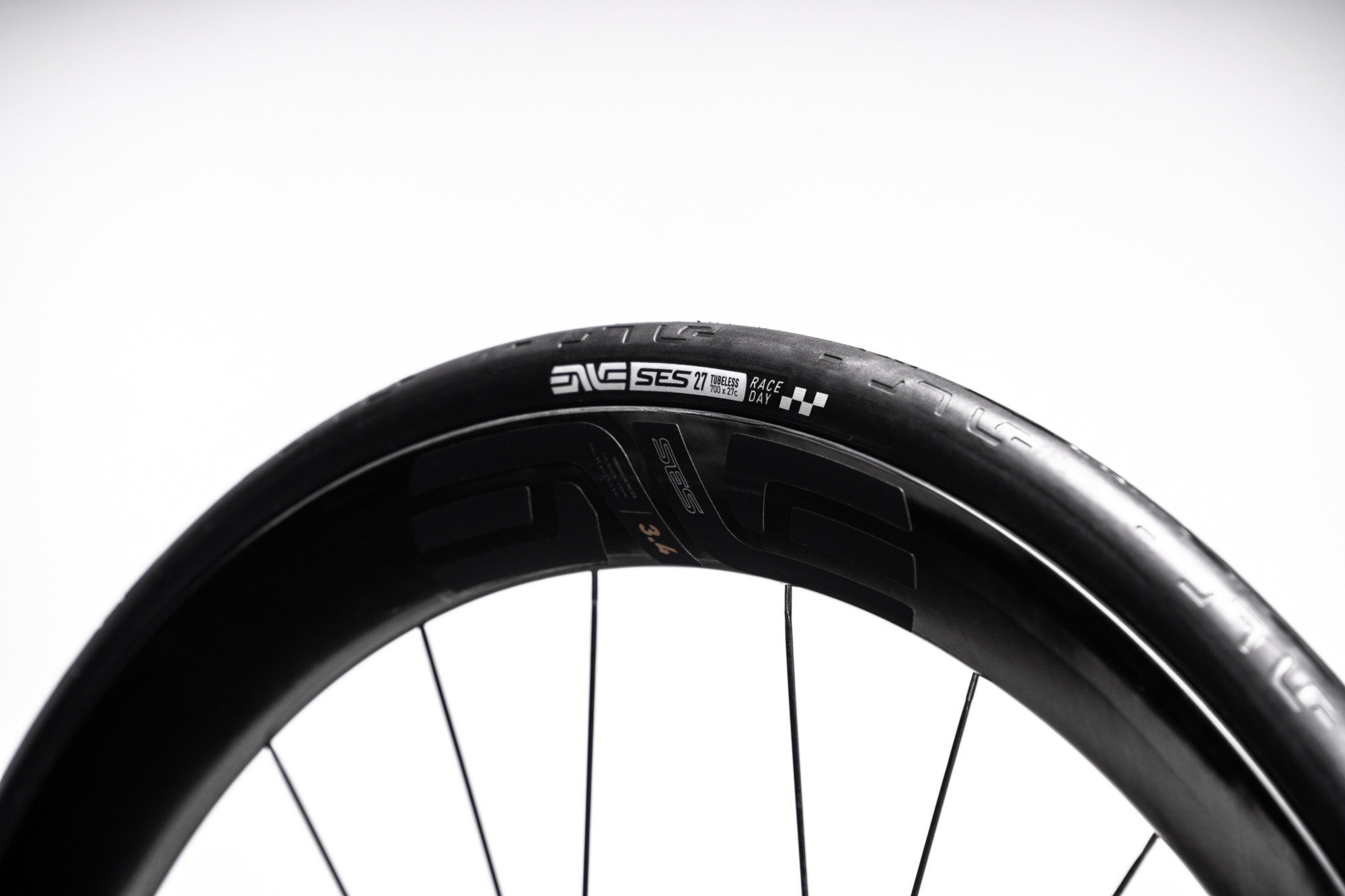
So what makes the tubeless ready Race Day so fast? According to Enve it’s a combination of the ‘nano-technology’ enhanced rubber compound, the ‘novel’ casing construction, and the aerodynamically optimized SES tread pattern and shape. The result is a tire that has a claimed weight of 195g for the 27c width and 210g for the 29c and is said to be some 6.5 watts quicker than the standard SES tire.
The ‘fastest SES tire’ moniker doesn’t come without cost though. Enve is honest enough to acknowledge that speed takes priority over puncture protection and longevity on this $100 tire.
Wahoo announces updates for the Bolt and Roam
The days of bike computers merely telling you how fast you’re going or how far you’ve travelled are long gone. Today they navigate, track and train with a host of features as long as your arm. In this spirit, Wahoo has announced a series of updates applicable to the latest models of both the Elemnt Bolt and Roam.
Wahoo users will soon be able to control both their GoPro cameras and their ANT+ enabled lights directly from their head unit. For the former, that means being able to start and stop a recording as well as selecting the various inbuilt camera modes; it’s worth pointing out that it’s not clear just yet whether this will cover all GoPro models. As for the lights, you’ll again be able to control models such as Garmin’s Varia from the head unit, as well as monitor battery life.
And the updates don’t stop there. If you’re listening to music, for example when you’re training indoors, you’ll now be able to change tracks, adjust the volume and more without having to access the device that’s playing the music. Finally Wahoo has expanded its support to include four more training plans - Humango, Final Surge, Nolio, and Join - which you can now upload directly to the computer.







